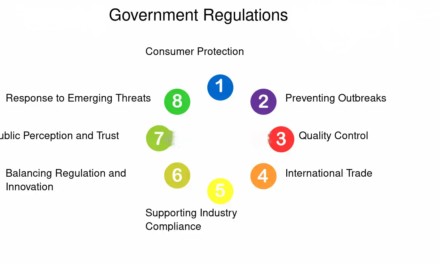Beverage companies use a combination of standardized processes, advanced technologies, and rigorous quality control measures to ensure product consistency across global markets. Here’s how they achieve this:
1. Global Standardization of Recipes
- Impact: Ensures the same taste, texture, and nutritional profile of beverages worldwide.
- How:
- Use detailed formulations with precise ingredient specifications.
- Employ centralized R&D teams to develop and test recipes before a global rollout.
- Adjust recipes minimally to account for regional ingredient availability or local taste preferences.
2. Strict Quality Control Measures
- Impact: Maintains uniform quality and safety standards.
- How:
- Standardized Testing Protocols: Routine analysis of raw materials and finished products for pH, sweetness, carbonation, color, and other attributes.
- Quality Management Systems (QMS): Certifications such as ISO 9001 and HACCP ensure adherence to global quality standards.
- Frequent Audits: Conduct internal and third-party audits of production facilities to identify and address inconsistencies.
3. Advanced Manufacturing Technologies
- Impact: Ensures precise and repeatable production processes.
- How:
- Automated and digitized machinery is used for mixing, bottling, and packaging.
- Employ Internet of Things (IoT) devices and sensors for real-time monitoring of production parameters.
- Implement robotics and AI for precision and efficiency in production lines.
4. Ingredient Sourcing and Supplier Management
- Impact: Guarantees consistent raw material quality across locations.
- How:
- Partner with global suppliers who adhere to strict quality standards.
- Establish approved supplier lists and conduct regular audits.
- Use ingredient traceability systems, including blockchain, to monitor and verify the supply chain.
5. Water Quality Management
- Impact: Water is a primary ingredient in most beverages; its quality greatly impacts consistency.
- How:
- Install water treatment systems at production facilities to standardize mineral content and purity.
- Test water quality regularly to ensure compliance with global and local standards.
- Use reverse osmosis or demineralization processes for uniform water characteristics.
6. Regional Adaptations
- Impact: Addresses local preferences while maintaining core brand identity.
- How:
- Tailor sweetness levels, flavor profiles, or carbonation intensity to suit regional tastes.
- Introduce region-specific variants while adhering to global quality benchmarks.
7. Training and Workforce Development
- Impact: Ensures that production teams consistently apply global standards.
- How:
- Provide standardized training programs for employees worldwide.
- Share best practices and updates through global knowledge-sharing platforms.
- Deploy experienced quality control personnel to oversee operations at key locations.
8. Unified Packaging Standards
- Impact: Maintains consistent branding and product protection.
- How:
- Use globally uniform packaging materials and designs adapted minimally for local regulatory compliance.
- Implement automated inspection systems to ensure packaging quality.
- Test packaging integrity to withstand different climates and transport conditions.
9. Real-Time Data and Analytics
- Impact: Enables monitoring of production consistency and quick identification of issues.
- How:
- Use IoT and cloud-based platforms to collect and analyze data across facilities.
- Monitor key performance indicators (KPIs) like batch yields, downtime, and defect rates.
- Employ predictive analytics to foresee and mitigate potential production inconsistencies.
10. Regulatory Compliance
- Impact: Ensures consistency while meeting diverse legal requirements.
- How:
- Maintain in-depth knowledge of food safety and labeling laws in each market.
- Adapt product formulations or labels minimally to comply with local regulations without compromising consistency.
11. Consumer Feedback Integration
- Impact: Maintains consistency by addressing consumer concerns and expectations.
- How:
- Collect feedback through surveys, social media, and product reviews.
- Use insights to refine processes and improve product uniformity.
- Implement traceability systems to resolve consumer issues swiftly.
12. Partnerships and Collaboration
- Impact: Enhances consistency by leveraging local expertise.
- How:
- Collaborate with local bottlers and co-packers who understand regional nuances.
- Provide partners with clear guidelines and continuous training to meet global standards.
- Monitor partner facilities to ensure compliance with brand requirements.
Examples
- Coca-Cola: Operates globally with a “secret formula” but adjusts sweetness levels and carbonation intensity based on regional preferences.
- PepsiCo: Implements strict quality standards across bottling partners while tailoring flavors to local markets.
- Nestlé: Maintains consistent production processes for beverages like Nescafé through centralized R&D and localized manufacturing.
Conclusion
Beverage companies use a strategic mix of standardized processes, advanced technology, and local adaptation to ensure product consistency across global markets. They maintain their brand reputation while meeting diverse consumer expectations by investing in quality control, supplier partnerships, and workforce training.
Hashtags
#BeverageStandards #QualityControl #GlobalQuality #BeverageExcellence #StandardizedBeverages #InnovativeDrinks #SustainableSupplyChain #InternationalStandards #BeverageManufacturing #ConsistentQuality #GlobalTrends #BeverageSustainability #QualityBeverages #InnovativeProduction #GlobalMarketTrends #BeverageConsistency #SustainableDrinks #FutureOfBeverageIndustry #InternationalStandards #BeverageInnovation









